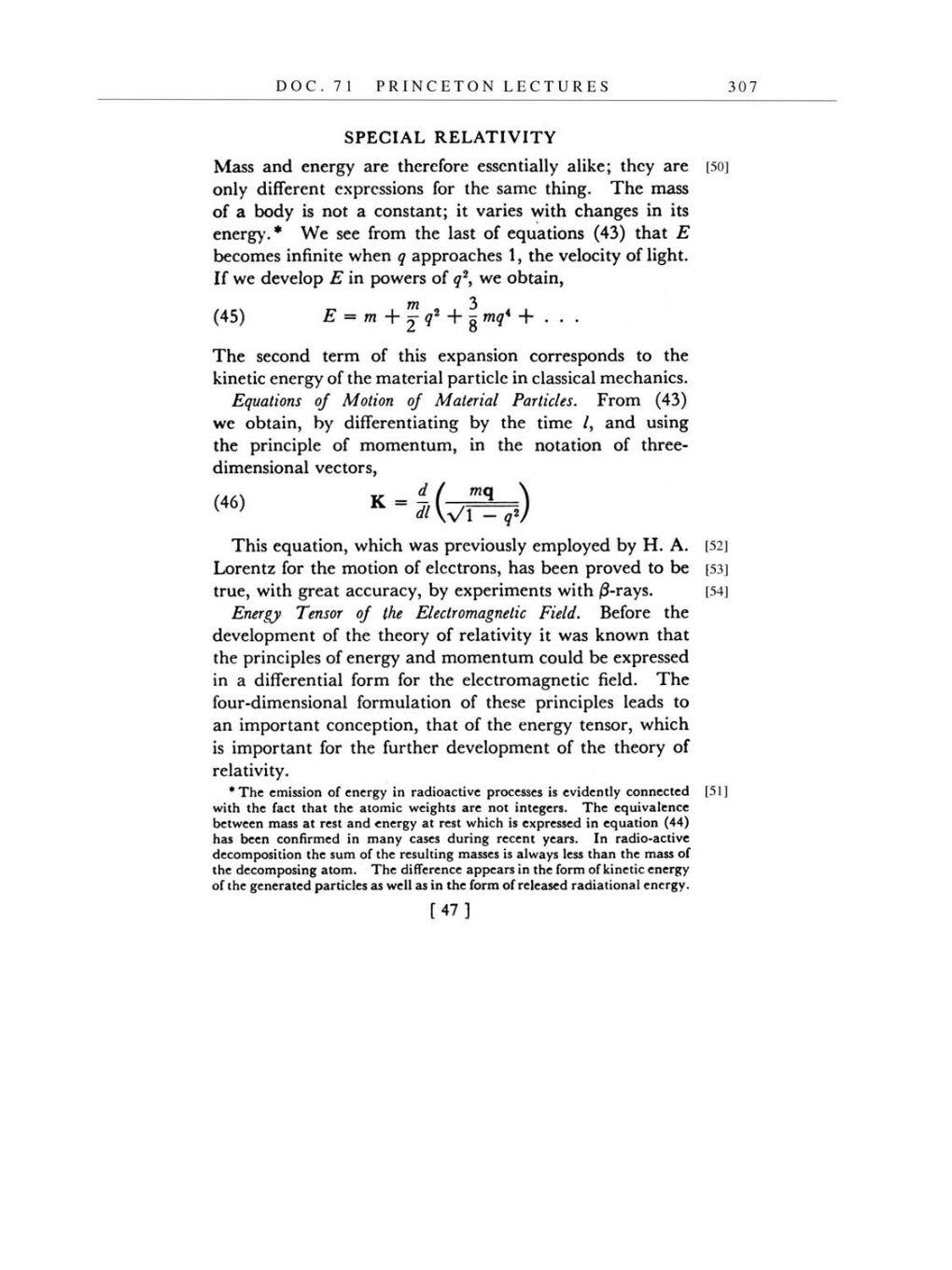DOC.
71
PRINCETON LECTURES
307
SPECIAL
RELATIVITY
Mass
and
energy
are
therefore
essentially alike; they
are
[50]
only
different
expressions
for the
same
thing.
The
mass
of
a
body is
not
a
constant;
it
varies with
changes
in its
energy.*
We
see
from the last of
equations
(43)
that E
becomes infinite when
q
approaches
1,
the
velocity
of
light.
If
we
develop
E in
powers
of
q2,
we
obtain,
(45)
E
=
m+
^q2+^
mq4
+
. . .
The
second
term
of this
expansion
corresponds
to
the
kinetic
energy
of the
material
particle
in classical mechanics.
Equations
of
Motion
of
Material
Particles.
From
(43)
we
obtain,
by
differentiating
by
the time
l,
and
using
the
principle
of
momentum,
in
the notation
of
three-
dimensional
vectors,
This
equation,
which
was
previously
employed
by
H.
A.
[52]
Lorentz
for
the motion
of
electrons,
has
been
proved to
be
[53]
true,
with
great
accuracy, by
experiments
with
/3-rays. [54]
Energy
Tensor
of the Electromagnetic
Field.
Before
the
development
of the
theory
of
relativity
it
was
known
that
the
principles
of
energy
and
momentum
could be
expressed
in
a
differential
form
for
the
electromagnetic
field.
The
four-dimensional formulation
of these
principles
leads
to
an
important conception,
that
of the
energy tensor,
which
is
important
for the
further
development
of the
theory
of
relativity.
*The
emission of
energy
in radioactive
processes
is
evidently
connected
[51]
with the fact that the atomic
weights
are
not integers.
The
equivalence
between
mass
at rest
and
energy
at rest
which
is
expressed
in
equation (44)
has been confirmed in
many
cases
during
recent
years.
In radio-active
decomposition
the
sum
of the
resulting
masses
is
always
less
than the
mass
of
the
decomposing atom.
The difference
appears
in
the form of kinetic
energy
of the
generated particles
as
well
as
in the form of released radiational
energy.
[47]
dlmq (46)
K=~~~/l_q2)K=~~~/l_q2)
